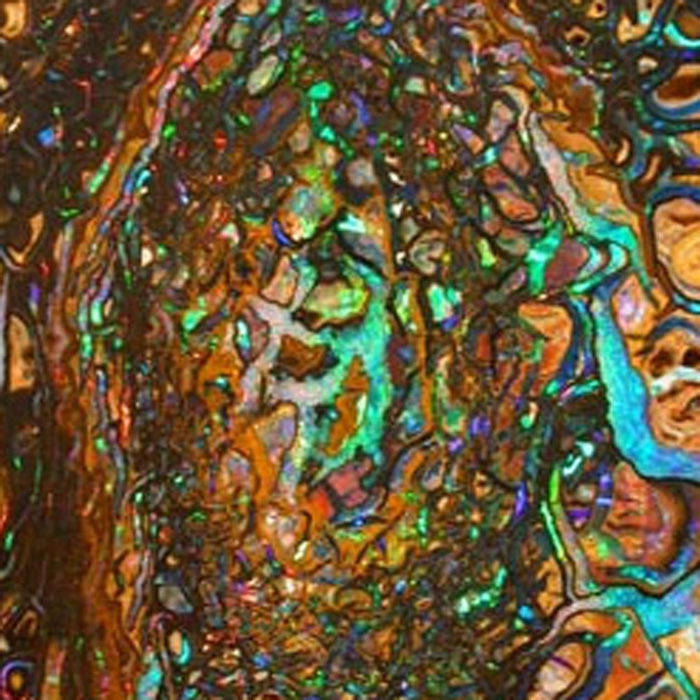Scientific Name: Hardened silica gel
Group: Silicates – tectosilicates
Chemical composition: SiO2nH20
Colors: Multicolored glints in brown matrix.
Hardness: 5 to 6
Formation: Amorphous crystal; Massive form
Principal Sources: Australia
Special Notes: Opal is an amorphous form of silica related to quartz, a mineraloid form, not a mineral. 3% to 21% of the total weight is water, but the content is usually between 6% to 10%. It is deposited at a relatively low temperature and may occur in the fissures of almost any kind of rock, being most commonly found with limonite, sandstone, rhyolite, marl and basalt. Opal is the national gemstone of Australia, which produces 97% of the world’s supply. Opal’s internal structure makes it diffract light; depending on the conditions in which it formed it can take on many colors. The word opal is adapted from the Roman term opalus, but the origin of this word is a matter of debate. However, most modern references suggest it is adapted from the Sanskrit word úpala. The term first appears in Roman references around 250 B.C., at a time when the opal was valued above all other gems. The opals were supplied by traders from the Bosporus, who claimed the gems were being supplied from India. Yowah is known for it’s unique and distinctive matrix opal

